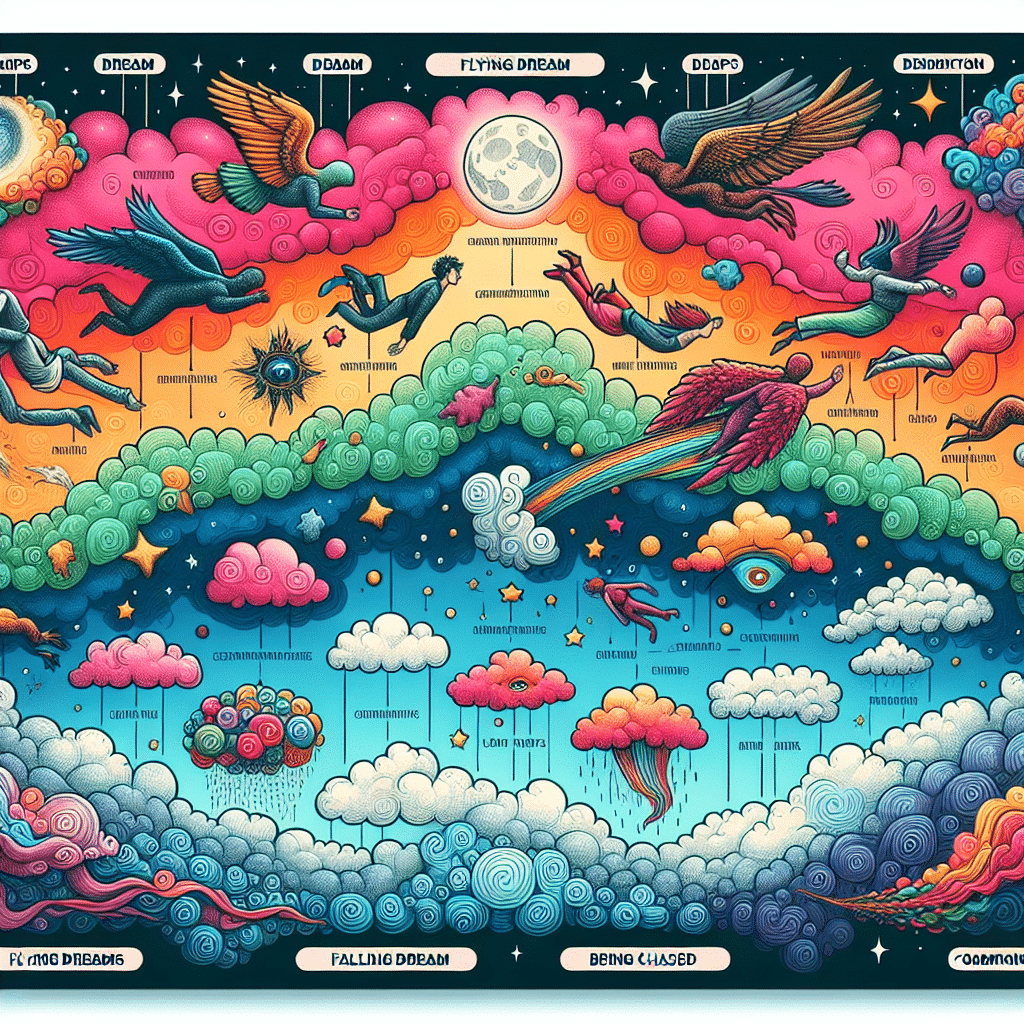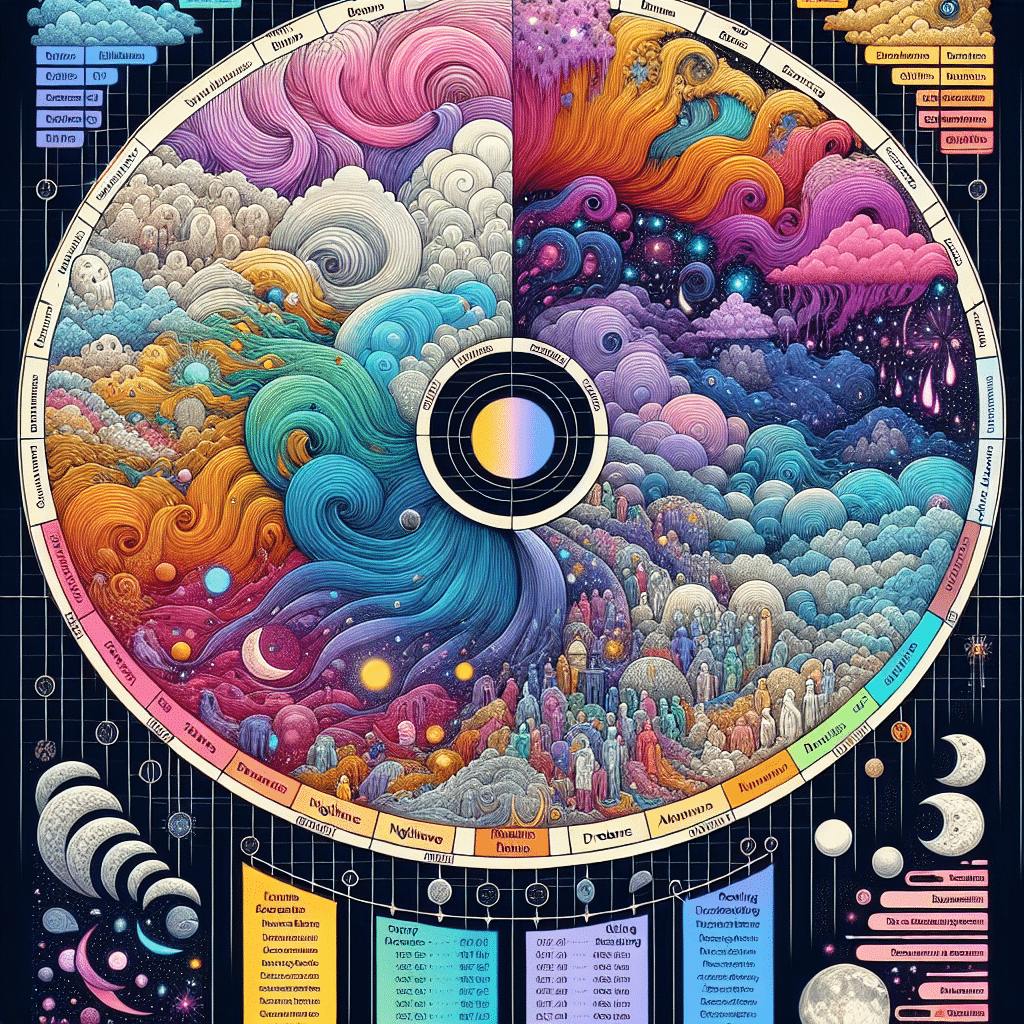
Understanding dreams is a fascinating journey into the inner workings of the mind. Dreams have long been a topic of intrigue and mystery, with many people seeking to uncover the hidden meanings behind them. In this article, we will delve into the science and significance of dreams, shedding light on the rich tapestry of our subconscious minds.
From Freud’s theories of dream symbolism to modern research on the brain’s activity during sleep, there is much to learn about the enigmatic world of dreams. Join us as we explore the intricate web of meanings and interpretations that can be found within the realm of dreams.
An Introduction to Dream Charts: Recording and Interpreting Your Dreams
Keeping track of your dreams can provide valuable insights into your subconscious mind. Dream charts are tools used to record details of your dreams, such as locations, people, objects, and emotions experienced during the dream sequence. By maintaining a dream chart, you can identify patterns, recurring themes, and symbols that may hold significance in your waking life.
Start by creating a simple template for your dream chart, including sections for date, time of dream, key symbols, emotions, and any notable events or interactions. Each morning, take a few minutes to jot down as much detail as you can remember from your dreams. Over time, you may start to notice connections between your dreams and events in your daily life.
When interpreting your dream chart, pay attention to recurring symbols or themes. For example, dreaming of flying could indicate a desire for freedom or a need to escape a current situation. Similarly, dreaming of water may signify emotions or a need for cleansing and renewal.
It’s important to remember that dream interpretation is subjective and can vary based on individual experiences and beliefs. Some people may find it helpful to seek guidance from a professional dream analyst or psychologist to gain a deeper understanding of their dreams.
By using a dream chart to record and interpret your dreams, you can gain valuable insights into your subconscious mind and emotions. Whether you’re looking to explore personal growth, gain clarity on a specific issue, or simply enhance your self-awareness, keeping a dream chart can be a powerful tool for personal development.
An Introduction to Dream Charts: Recording and Interpreting Your Dreams
Keeping a dream chart can be a powerful tool for unraveling the mysteries of your subconscious mind. By recording your dreams regularly, you can start to identify patterns, symbols, and themes that may be recurring in your dream world. This process can help you gain insights into your thoughts, emotions, and inner conflicts that you may not be fully aware of during your waking hours.
When creating a dream chart, it’s essential to jot down as many details as possible about your dreams. This includes the people, places, objects, and emotions that appear in your dreams. Additionally, noting the colors, sounds, and other sensory experiences can also add valuable clues to the interpretation of your dreams.
Exploring Variations: Common Types and Themes in Dreams
There are many common types and themes that often appear in dreams, regardless of cultural backgrounds. Some of these themes include flying, falling, being chased, losing teeth, or being in unfamiliar places. Understanding these common dream scenarios can help you start to decode the messages that your subconscious mind is trying to convey.
For example, dreaming about flying may symbolize a sense of freedom, while dreaming about falling could represent feelings of insecurity or loss of control. By recognizing these common dream themes, you can begin to interpret the underlying meanings of your dreams and apply them to your waking life.
While dream interpretation is a highly individualized process, exploring the common types and themes in dreams can provide a starting point for understanding the messages that your subconscious mind is sending. By keeping a dream chart and reflecting on the patterns and symbols that emerge, you can unlock the hidden wisdom of your dreams and gain a deeper understanding of yourself.

Into the Deep: A Cultural Perspective on Dream Interpretation
Understanding dream interpretation from a cultural perspective adds a layer of complexity and richness to the practice. Different cultures around the world have unique beliefs, symbols, and rituals related to dreams. These cultural nuances can greatly influence how dreams are perceived and interpreted.
Native American Dream Beliefs
Native American cultures have a deep respect for dreams and often view them as messages from the spirit world. Dream catchers, for example, are traditional objects believed to filter out bad dreams and allow only good dreams to pass through. Dream interpretation in Native American cultures involves looking at the symbolism within the dream and its connection to the individual’s life and purpose.
Asian Dream Symbolism
In many Asian cultures, dreams are seen as reflections of one’s inner thoughts and emotions. Dream symbols hold great significance, and dream interpretation often involves consulting dream dictionaries specific to that culture. For example, dreaming of dragons in Chinese culture may symbolize power and strength, while dreaming of water in Hindu culture may represent purification and renewal.
African Dream Rituals
In African cultures, dreams are believed to offer guidance from ancestors and spirits. Dream interpretation often involves consulting elders or traditional healers who have a deep understanding of symbolic meanings. Dream rituals, such as dream incubation or dream sharing ceremonies, are common practices in many African communities to help individuals harness the wisdom of their dreams.
By exploring dream interpretation through a cultural lens, we can gain a deeper understanding of the universal language of dreams and how it manifests differently across diverse societies. Incorporating cultural perspectives into dream charts can enhance the depth and accuracy of dream analysis, leading to more profound insights and personal growth.
Case Studies: Dream Subjects and their Meaning in Various Cultures
Case Study 1: The Dream of Flying
One common dream that transcends various cultures is the dream of flying. In Western culture, this dream often symbolizes a sense of freedom and liberation. It may indicate a desire to break free from constraints or limitations in one’s waking life. However, in Chinese culture, dreaming of flying may be interpreted as a sign of success and achievement.
Case Study 2: The Dream of Falling
Another widespread dream theme is the dream of falling. In some cultures, such as Native American tribes, falling in a dream may be seen as a warning sign or a message from the spirit world. In contrast, in certain African cultures, falling dreams are believed to signify a need for grounding and reconnecting with one’s roots.
Case Study 3: The Dream of Being Chased
The dream of being chased is a prevalent theme that varies in interpretation across cultures. In Western societies, this dream may represent feelings of anxiety, stress, or a sense of being pursued by one’s problems. On the other hand, in Japanese culture, being chased in a dream might symbolize a pursuit of personal goals and ambitions.
Case Study 4: The Dream of Teeth Falling Out
One of the most common dreams experienced worldwide is the dream of teeth falling out. In different cultures, this dream can hold varying meanings. In some cultures, like the Mexican tradition, losing teeth in a dream is believed to signify a significant life change or transition. In contrast, in Russian folklore, this dream is seen as a sign of impending death or illness.
Case Study 5: The Dream of Water
Dreams involving water are prevalent in many cultures and can have diverse interpretations. In Egyptian culture, dreaming of water is often associated with rebirth, renewal, and purification. In Hindu tradition, water in dreams may symbolize emotional cleansing and spiritual growth.

Summary:
By delving into the intricate world of dreams, we have uncovered the science and significance behind them. Dream charts serve as a powerful tool in not only recording but also interpreting our subconscious thoughts and emotions. Exploring the different types and themes found in dreams allows us to gain a deeper understanding of ourselves and our inner workings. Additionally, through a cultural perspective on dream interpretation, we can witness the diverse ways in which dreams are perceived and valued across various societies. By analyzing case studies, we see how dreams can hold important meanings that have the potential to impact our waking lives.






